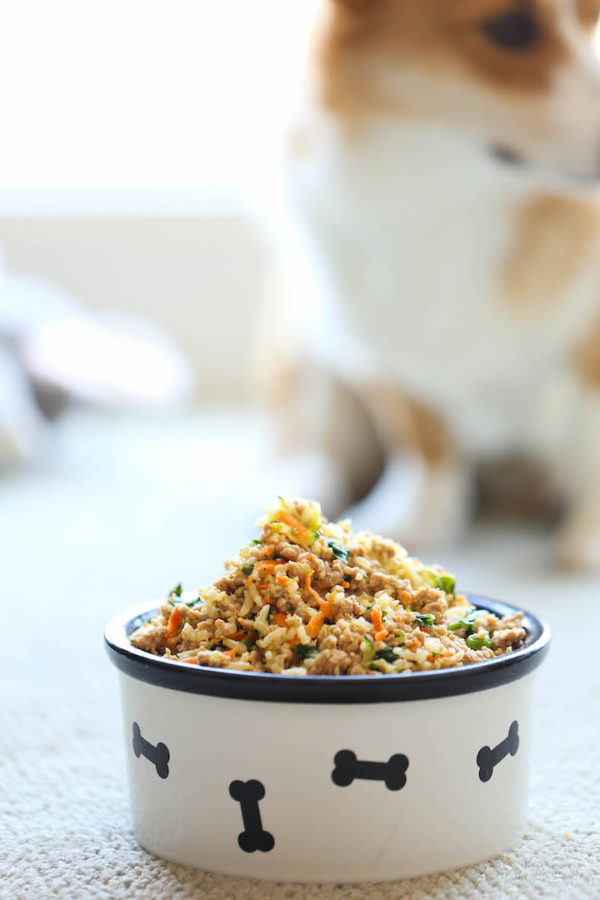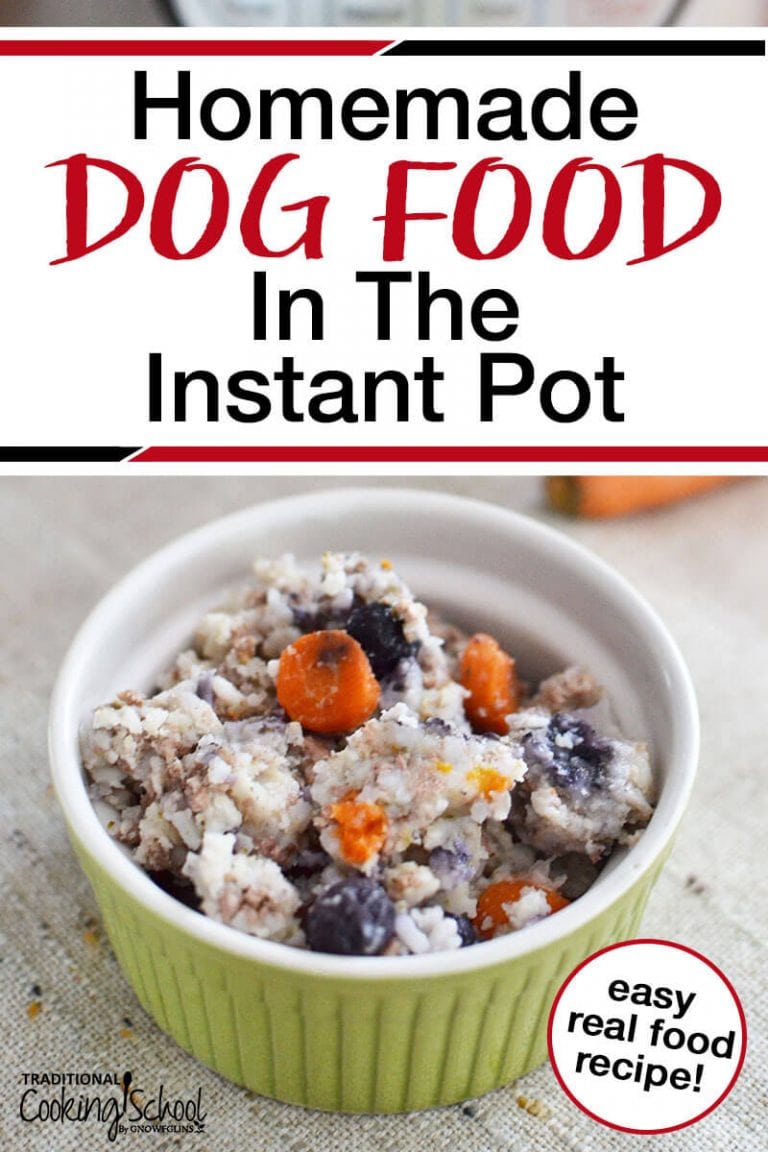homemade dog food quick
Homemade Dog Food: Quick and Easy Recipes
Making your own dog food is a great way to ensure that your pet is getting the nutrients they need, while also saving money. Homemade dog food can be customized to your dog's individual needs, and it's a great way to use up leftover ingredients from your kitchen.
This article will provide you with some quick and easy recipes for homemade dog food, as well as tips on how to make sure your dog is getting the nutrients they need.
What Ingredients Do I Need?

The basic ingredients you will need to make homemade dog food are:
- Meat: This is the main source of protein in your dog's diet. You can use any type of meat, such as beef, chicken, pork, lamb, or fish.
- Vegetables: Vegetables provide your dog with essential vitamins, minerals, and fiber. Some good choices for vegetables include carrots, peas, green beans, broccoli, and zucchini.
- Grains: Grains provide your dog with carbohydrates, which are an important source of energy. Some good choices for grains include brown rice, oatmeal, barley, and quinoa.
- Oils: Oils provide your dog with essential fatty acids, which are important for their skin and coat health. Some good choices for oils include olive oil, coconut oil, and fish oil.
How Much Should I Feed My Dog?

The amount of food you feed your dog will depend on their age, weight, and activity level. A good rule of thumb is to feed your dog 2-3% of their body weight per day. So, for example, if your dog weighs 10 pounds, you would feed them 2-3 ounces of food per day.

You can also adjust the amount of food you feed your dog based on their activity level. If your dog is very active, you may need to feed them a little more food. If your dog is less active, you may need to feed them a little less food.
How Often Should I Feed My Dog?


Most dogs do best when they are fed twice a day. However, some dogs may do better with three or more meals per day. You can experiment with different feeding schedules to see what works best for your dog.

What Are the Benefits of Homemade Dog Food?
There are many benefits to making your own dog food, including:
- Cost savings: Homemade dog food can be much cheaper than store-bought dog food.
- Control over ingredients: You can control the ingredients in your dog's food, ensuring that they are getting the nutrients they need.
- Customized nutrition: You can customize your dog's food to meet their individual needs, such as allergies or sensitivities.
- Freshness: Homemade dog food is fresh, which is better for your dog's health.

What Are the Risks of Homemade Dog Food?
There are a few risks associated with making your own dog food, including:


- Nutritional deficiencies: If you are not careful, you could end up making a dog food that is deficient in certain nutrients. This could lead to health problems for your dog.
- Bacteria contamination: If you do not properly store and prepare your dog food, it could become contaminated with bacteria. This could make your dog sick.
- Ingestion of harmful ingredients: If you are not careful, you could accidentally include harmful ingredients in your dog's food. This could also make your dog sick.

Tips for Making Homemade Dog Food
Here are a few tips for making homemade dog food:

- Start with a recipe: There are many different recipes for homemade dog food available online. Choose a recipe that is appropriate for your dog's age, weight, and activity level.
- Use fresh, high-quality ingredients: The best ingredients for homemade dog food are fresh, whole foods. Avoid using processed foods or foods that contain artificial ingredients.
- Cook your food properly: It is important to cook your dog food properly to kill any harmful bacteria. Cook meat until it is browned on the outside and no longer pink on the inside. Cook vegetables until they are soft.
- Store your food properly: Store your dog food in an airtight container in the refrigerator or freezer. Cooked food can be stored in the refrigerator for up to 3 days or in the freezer for up to 3 months.
- Feed your dog slowly: When you are first introducing your dog to homemade food, start by feeding them small amounts and gradually increase the amount over time. This will help to prevent your dog from getting an upset stomach.
- Watch for signs of food allergies or sensitivities: Some

Homemade Dog Food: A Quick and Easy Guide
Making your own dog food can be a great way to save money, control your dog's diet, and ensure that they are getting the nutrients they need. However, it can also be time-consuming and difficult to know where to start.
This guide will walk you through the process of making homemade dog food, from choosing the right ingredients to cooking and storing your food. We'll also provide some tips on how to make your food more palatable for your dog.
Choosing the Right Ingredients
The first step in making homemade dog food is choosing the right ingredients. You will need to select a protein source, a carbohydrate source, and a fat source. You may also want to add some vegetables and fruits to your food.
Protein Sources

The best protein sources for dogs are meat, fish, and eggs. These foods are high in protein and essential amino acids, which are necessary for your dog's health.
- Meat: Beef, chicken, pork, lamb, and turkey are all good choices for protein sources. You can use ground meat, boneless skinless chicken breasts, or whole cuts of meat.
- Fish: Fish is a good source of omega-3 fatty acids, which are essential for your dog's coat and skin health. Salmon, tuna, mackerel, and sardines are all good choices.
- Eggs: Eggs are a good source of protein and essential amino acids. You can use whole eggs, egg whites, or egg yolks.
Carbohydrate Sources

Carbohydrates are an important source of energy for dogs. The best carbohydrate sources for dogs are whole grains, such as brown rice, oatmeal, and barley. You can also use sweet potatoes, yams, and potatoes.
Fat Sources
Fats are an important source of energy for dogs. The best fat sources for dogs are healthy fats, such as olive oil, canola oil, and peanut oil. You can also use butter or ghee.

Vegetables and Fruits
Vegetables and fruits are a good way to add nutrients and flavor to your dog's food. You can use any vegetables or fruits that your dog enjoys. Some good options include carrots, peas, green beans, broccoli, apples, and bananas.
Cooking and Storing Your Food

Once you have chosen your ingredients, you can start cooking your food. The best way to cook dog food is to steam or boil the ingredients. You can also bake or roast them.
Once your food is cooked, you need to store it properly. The best way to store dog food is to freeze it in individual portions. This will help to keep the food fresh and prevent it from spoiling.
Tips for Making Homemade Dog Food


Here are a few tips for making homemade dog food:
- Start with a simple recipe. Don't try to make a complicated recipe when you're first starting out. Stick to a simple recipe with a few ingredients.
- Use fresh ingredients. Fresh ingredients are always best for your dog. Avoid using processed foods or foods that have been sitting on the shelf for a long time.
- Cook your food thoroughly. It is important to cook your food thoroughly to kill any bacteria.
- Store your food properly. The best way to store dog food is to freeze it in individual portions. This will help to keep the food fresh and prevent it from spoiling.
- Make sure your dog likes the food. The most important thing is to make sure your dog likes the food. If your dog doesn't like the food, they won't eat it.

Conclusion


Making your own dog food can be a great way to save money, control your dog's diet, and ensure that they are getting the nutrients they need. It can also be a fun and rewarding experience.
This guide has provided you with the basics of making homemade dog food. With a little bit of effort, you can make delicious and nutritious food for your furry friend.

Resources

